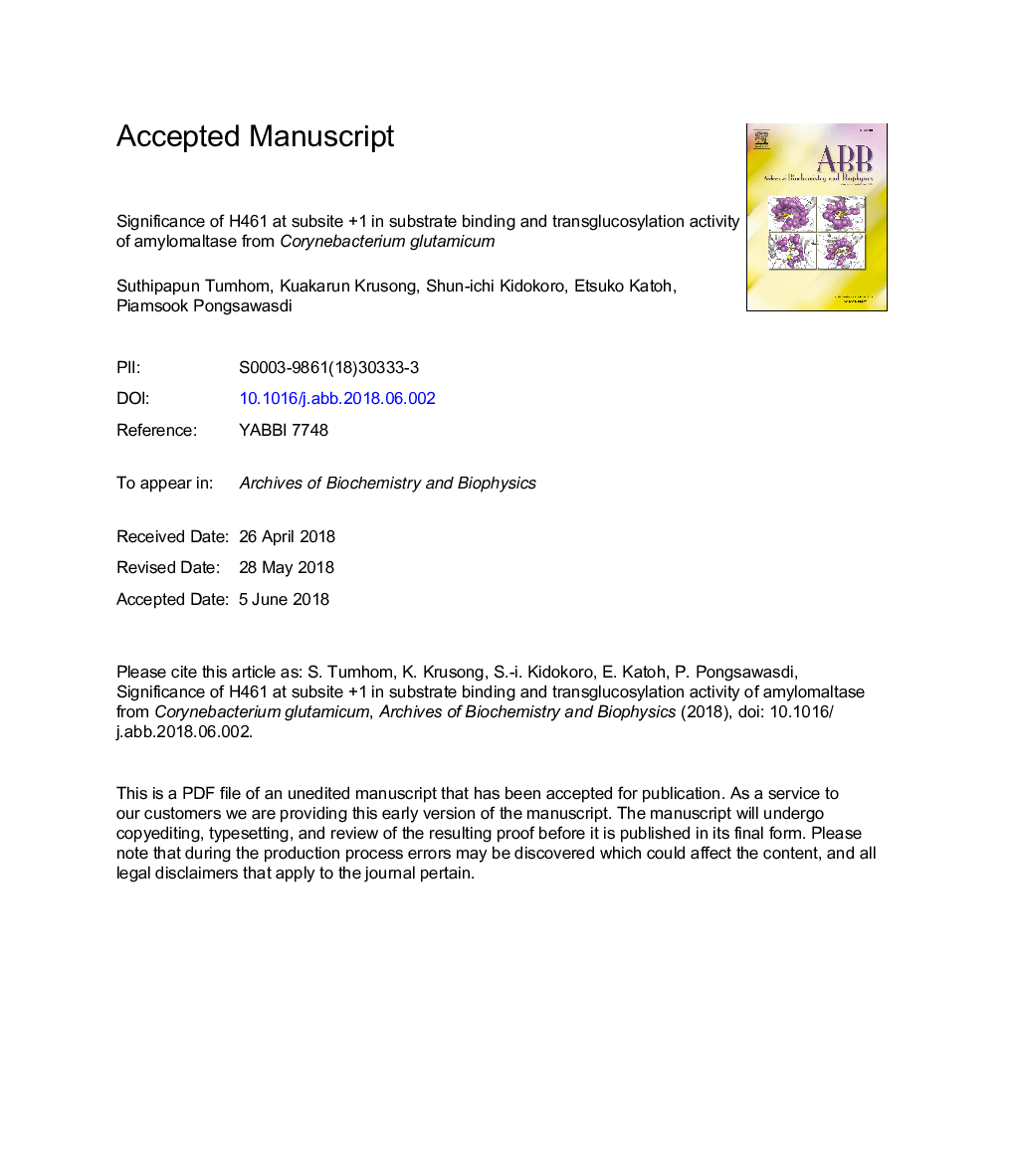| Article ID | Journal | Published Year | Pages | File Type |
|---|---|---|---|---|
| 8288503 | Archives of Biochemistry and Biophysics | 2018 | 27 Pages |
Abstract
Amylomaltase (AM) catalyzes inter- and intra-molecular transglycosylation reactions of glucan to yield linear and cyclic oligosaccharide products. The functional roles of the conserved histidine at position 461 in the active site of AM from Corynebacterium glutamicum (CgAM) was investigated. H461â¯A/S/D/R/W were constructed, their catalytic properties were compared to the wild-type (WT). A significant decrease in transglucosylation activities was observed, especially in H461A mutant, while hydrolysis activity was barely affected. The transglucosylation factor of the H461A-CgAM was decreased by 8.6 folds. WT preferred maltotriose (G3) as substrate for disproportionation reaction, but all H461 mutants showed higher preference for maltose (G2). Using G3 substrate, kcat/Km values of H461 mutated CgAMs were 40-64 folds lower, while the Km values were twice higher than those of WT. All mutants could not produce large-ring cyclodextrin (LR-CD) product. The heat capacity profile indicated that WT had higher thermal stability than H461A. The X-ray structure of WT showed two H-bonds between H461 and heptasaccharide analog at subsite +1, while no such bonding was observed from the model structure of H461A. The importance of H461 on substrate binding with CgAM was evidenced. We are the first to mutate an active site histidine in AM to explore its function.
Related Topics
Life Sciences
Biochemistry, Genetics and Molecular Biology
Biochemistry
Authors
Suthipapun Tumhom, Kuakarun Krusong, Shun-ichi Kidokoro, Etsuko Katoh, Piamsook Pongsawasdi,
